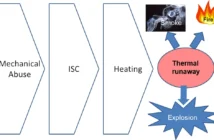As lithium-ion batteries progressively discharge, a coating gradually covers over their positive electrodes, and this can inhibit further transfer of ions. When this happens, the battery enters sleep mode as a self-protection measure. For if it did not, then the plating could cause short-circuiting between the electrodes, with uncertain consequences. Today we consider what’s best when lithium-ion batteries sleep this way.
How to Prevent Lithium-Ion Batteries Falling Asleep
What follows is for information only, and does not constitute safe procedure.
Self-discharge is one of the most important reasons to avoid allowing lithium-ion batteries to drop below 20% capacity. In fact, it is so important that wise lithium-ion battery makers include a protection circuit that prevents this happening, according to Battery University.
There are several ways in which lithium-ion batteries can enter sleep mode. However, the commonest cause is leaving them in storage, where self-discharge gradually robs them of their remaining energy. The question therefore arises whether we can safely recharge them again, without inciting an adverse chemical reaction.
Awaken Lithium-Ion Cells Gently, Say Experts
EnergySoft explains how many users trash discharged lithium-ion batteries gone dormant. Perhaps this is wise, because forcefully recharging them may lead to a battery malfunction. However, it may be possible to gently cause them to stir, with a low input current. Some battery chargers include this feature.
However, this step may lead to thermal runaway, and even an explosion if it continues for too long. Therefore, this step should only be considered after due consideration, when dealing with lithium-ion batteries in sleep mode.
Moreover, Battery University adds that we should not attempt this procedure with lithium-based batteries whose residual charge has been below 1.5 volts for more than a week. That’s because there may be copper shunts inside a cell that could cause short-circuiting. Perhaps it’s wiser after all to abandon the battery, or refer it to a knowledgeable service provider for professional advice.
More Information
Tiny Movements inside Lithium Battery Cells




